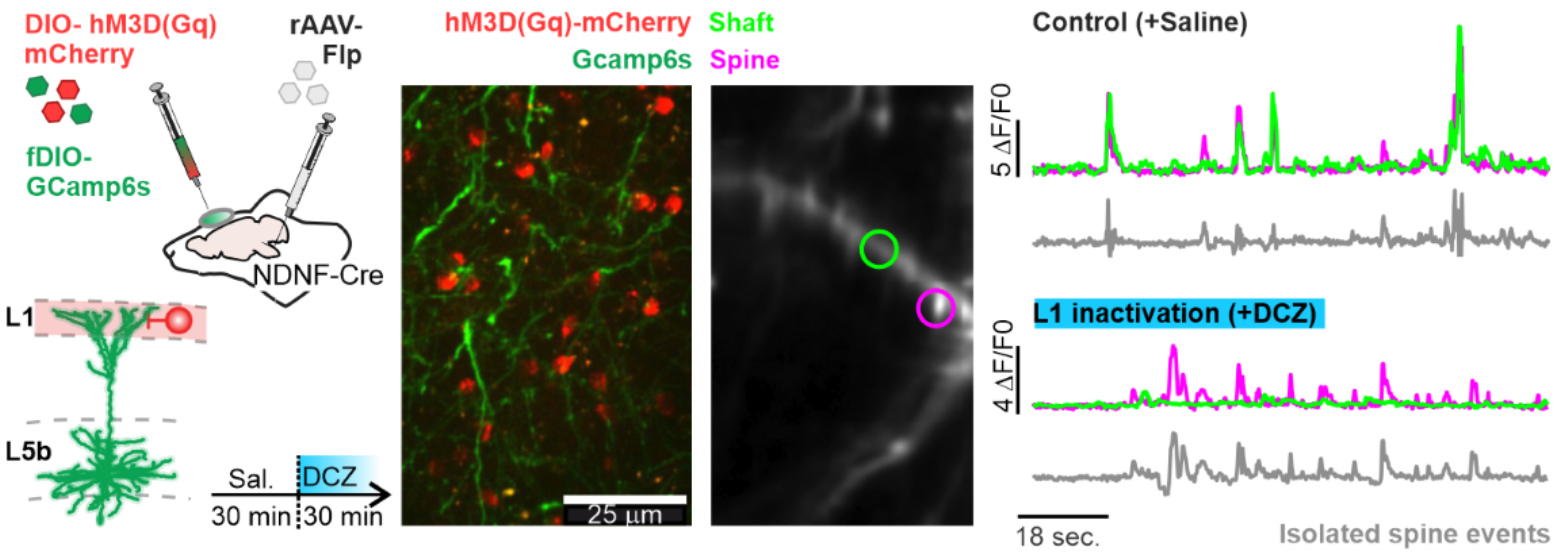
Website currently under construction!

Imagine you're driving in a country where the rules of the road suddenly change. One day, a red light means stop, but the next day, it means go. You would need to quickly adjust your behavior based on this new rule. In neuroscience, this ability to adapt to changing rules is called flexible learning, and it's a crucial component of intelligence.
Our latest study, "Tuft dendrites in frontal motor cortex enable flexible learning," explores a surprising neural mechanism behind this ability. Specifically, we investigated how a particular part of neurons—called apical tuft dendrites—in the rodent anterolateral motor cortex (ALM) helps animals adapt to new rules in a decision-making task.
For decades, neuroscientists have focused on how neuronal spikes encode information, but less attention has been given to dendrites, the tree-like branches of neurons where most synaptic input arrives. In the sensory cortex, we previously discovered that a special kind of electrical event, dendritic calcium spikes, plays a key role in perception Takahashi et al., Science 2016 and associative learning Doron et al., Science 2020. However, the role of dendrites in decision-making and motor learning was unknown.
Our study shows that dendritic computations in ALM are essential for flexible learning—the ability to adjust behavior based on new rules. But surprisingly, these dendrites don’t just help with learning in general. Instead, they play a selective role in refining cognitive flexibility, particularly in adapting to more structured environments.
We trained mice to switch between different rules in a decision-making task. To understand how tuft dendrites contributed to learning, we used optogenetics to selectively suppress their activity via a class of inhibitory neurons called NDNF interneurons in layer 1.
Here’s what we found:
Understanding how dendrites contribute to flexible learning has major implications for neuroscience, artificial intelligence, and even neuropsychiatric disorders.
For a long time, dendrites were thought to be passive structures that simply collected input. Our study suggests a much richer role—they are active computational units that help us adapt, learn, and change our minds when the world demands it.
This research adds a missing piece to the puzzle of how the brain flexibly adapts to new situations—bringing us one step closer to understanding how neurons "think" about rules.
This research was made possible through a collaborative effort supported by multiple funding sources. The project was initially funded by an Einstein Foundation grant, which enabled a key researcher, Dieter Jaeger from Emory University, to work with us at the Humboldt University of Berlin.
Following this crucial initial support, continued funding came from an NIH grant from the United States, as well as funding from the Deutsche Forschungsgemeinschaft (DFG) through the collaborative research center SFB 1315 on Mechanisms and Disturbances in Memory Consolidation – From Synapses to Systems (sfb1315.de).
Without this support, the project would not have been possible, and we are incredibly grateful for the opportunity to explore the fundamental principles of how neurons adapt to changing rules.